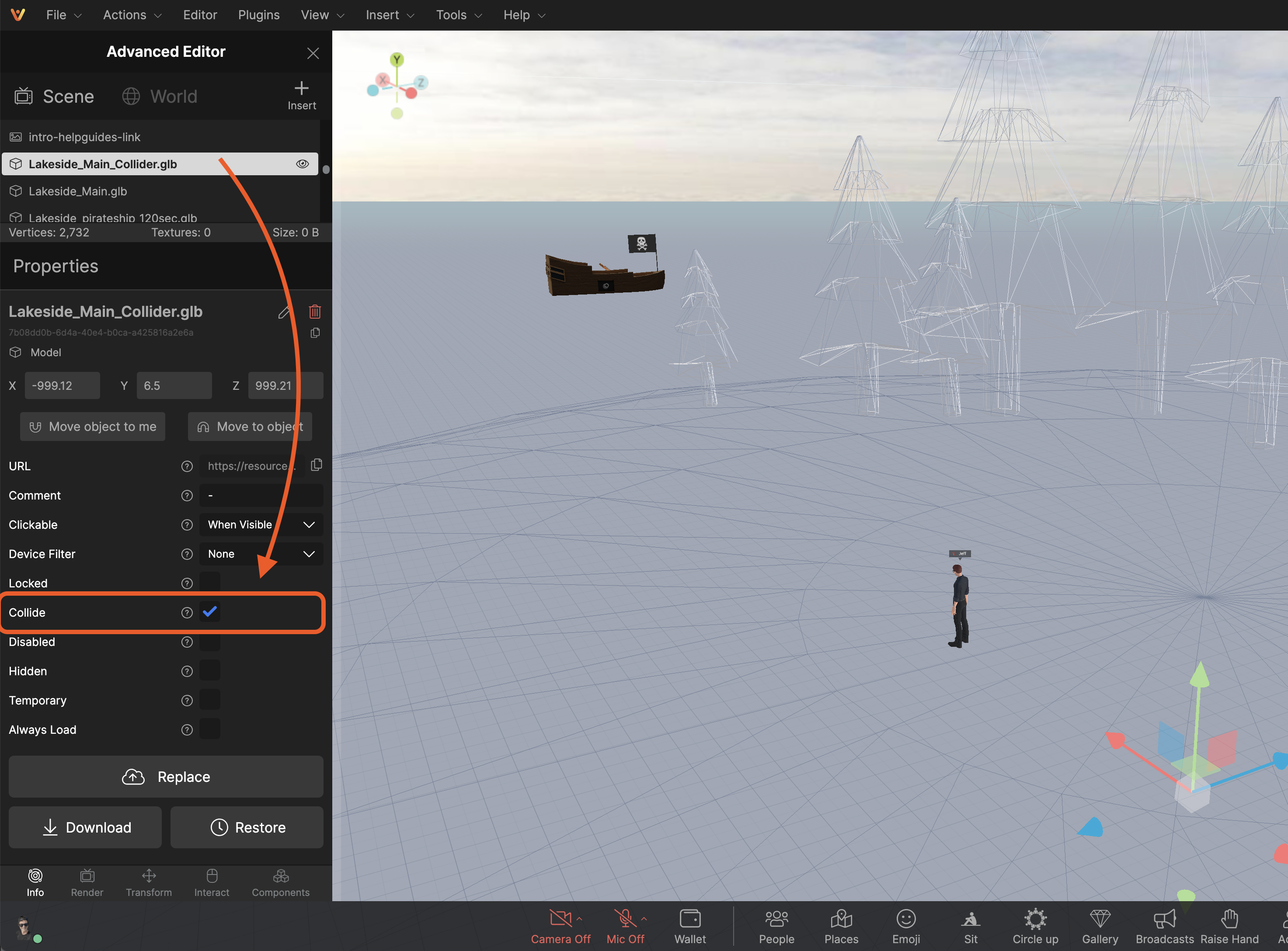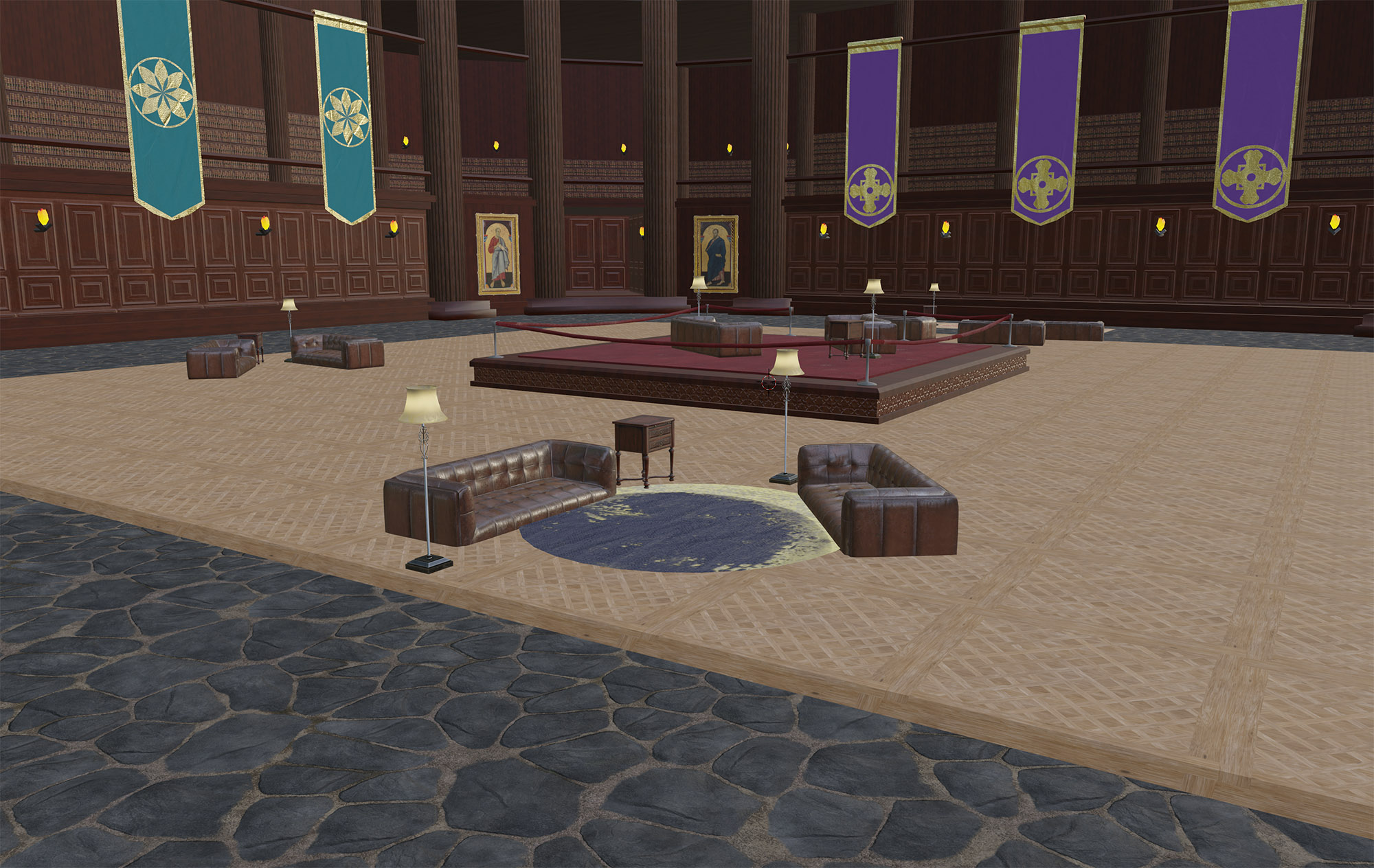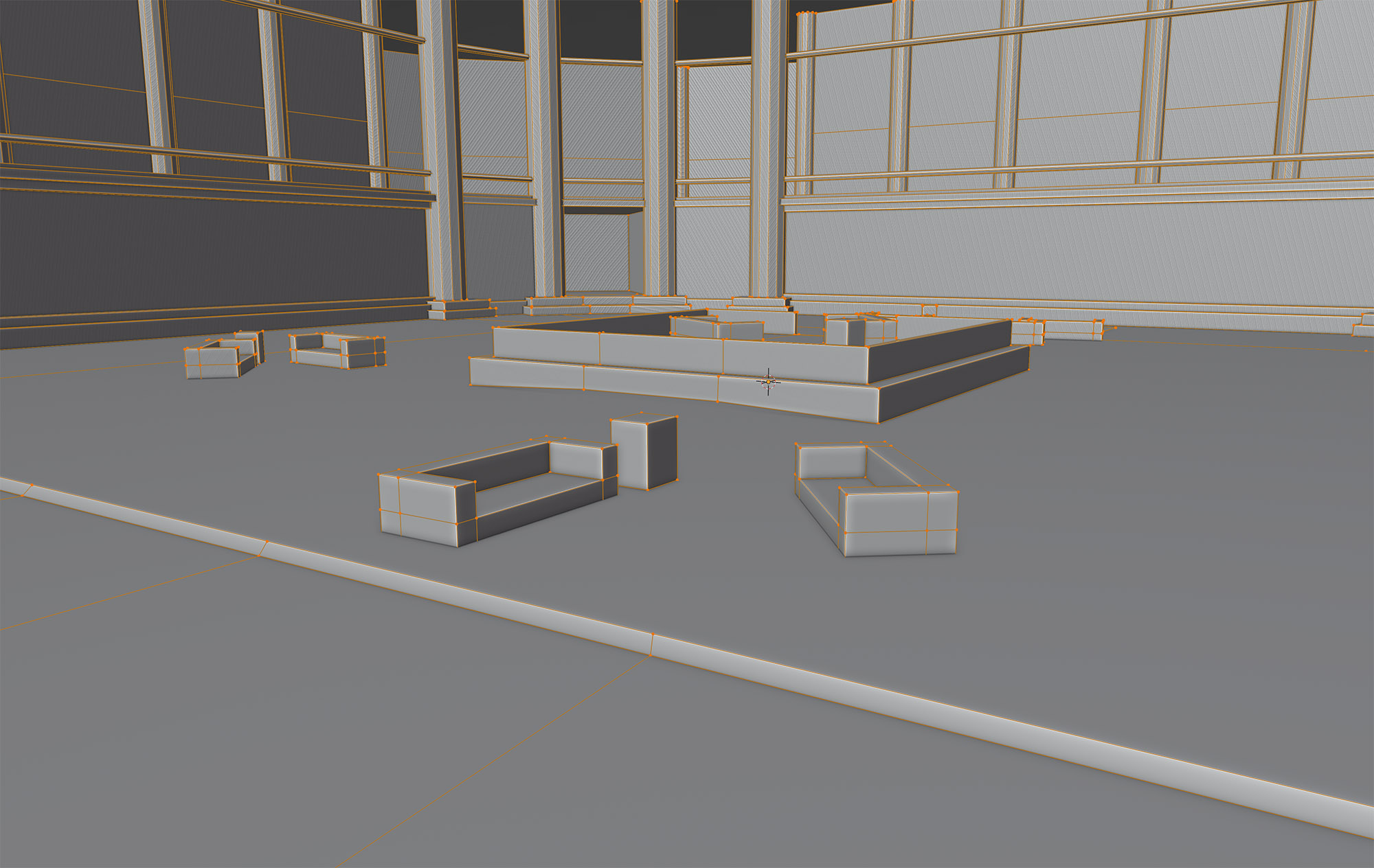Collision
"Collision" allows users to navigate onto objects, move up ramps, and be stopped by walls. Without collision, users can walk through walls and other objects while moving around the space.
In Vatom Spaces any object can have collision activated, however the more complex the model, the more calculations are required to determine collision during use.
For large and complex environments, we recommend creating a separate, low-poly layer specifically for collision.
Enable Collision on objects in your space by checking the box in the Object Info Properties.
Scene Editor > Object Properties > Info > Collide

Large Objects & Collision Layer Limits
Because collision physics can have an immediate impact on performance within a space, we recommend creating a separate collision model that has a much lower triangle or poly-count and no textures. This model can ignore any geometry that will not be interacted with, and create invisible barriers where needed.
Vatom Spaces currently provides a warning when trying to turn on collision for objects between 3,000-50,000 vertices.
Collisions are disabled as a rule on single objects beyond 50,000 triangles This is to prevent serious performance drain on end users, particularly on older machines or mobile.
Creating Collision Layers
-
Create a separate layer for collision that is extremely low-poly and no textures applied. This layer will be hidden underneath the visual world model.
-
When creating meshes for Collision, keep the poly count as low as possible and remove all textures.
-
Collision is active on surface normals, and is not active on the back of faces. Check your normals.
-
Use collision sparingly and only where it makes sense (e.g. floors, walls, chairs etc).
-
Combining collidable surfaces into a single mesh lowers the number of draw calls and calculations required by the physics engine.


Warehouse Office Co-Working Space by Vatom Spaces on Sketchfab
Warehouse Co-Working Office Space (Collider) by Vatom Spaces on Sketchfab
Animations with Collision
Animated objects can have collision enabled, in order to create moving walls, platforms, rides, lifts, etc.
When animating in Blender, user collision is based on the geometry's origin point. We recommend animating "empties" that have geometry parented to the empty.
- Animating an Object will only allow for vertical movement within spaces.
- Animating an "empty" will allow for full 3-dimensional movement. The user in spaces will always travel in relation to the empty point.